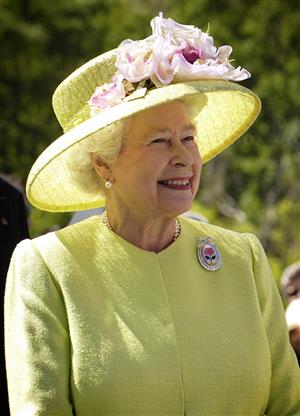The Farlex Grammar Book > English Grammar > Inflection (Accidence) > Conjugation > Tense > Past Tense > Past Perfect Continuous Tense
Past Perfect Continuous Tense
What is the past perfect continuous tense?
The past perfect continuous tense (also called the past perfect progressive tense) is used to describe an action that began and was still in progress in the past before another past action started. In contrast to the past perfect tense, which describes a past action that finished before the second action started, the past perfect continuous emphasizes the continuous progress of that action.
We usually use the past perfect continuous tense to emphasize the duration of the past action before the second action or event occurred. We can also use it to talk about a past action that caused or resulted in a past event or situation.
To form the past perfect continuous, we use had been + the present participle of the main verb. It is nearly identical in structure to the present perfect continuous tense, except that the modal auxiliary verb have is now in the past tense. For example:
- “We had been waiting for a long time when the bus finally came.”
- “My little sister had been sitting very quietly, but then she started to cry.”
- “I’d been cleaning all day, so I was too tired to go out last night.”
Like the past continuous tense, the past perfect continuous is generally only used with action verbs, not stative verbs.
Using the Past Perfect Continuous
Actions interrupted in the past
The most common use of the past perfect continuous tense is to describe an action that was in progress in the past before another past action or event occurred. When the second action happens, it interrupts and marks the completion of the first one. For example:
- “I had been teaching English in Tokyo when the earthquake hit.”
- “They’d been living in New York before she got the job in Washington, D.C.”
- “She had been traveling around Europe when she heard about her mother’s illness.”
Past durations of time
When we use the past perfect continuous tense in this way, we often describe the duration of the continuous past action. The meaning is very similar to the present perfect continuous tense in this way. However, whereas the present perfect continuous describes an action that was happening up until the present moment, the past perfect continuous highlights an action that was finished when another action or event in the past occurred. Consider, for example, these two sentences:
- “She has been waiting for over an hour for him to arrive.” (present perfect continuous tense)
- “She had been waiting for over an hour for him to arrive.” (past perfect continuous tense)
The meaning of both sentences is quite similar. However, in the first sentence, she began waiting an hour ago in the past, and is still waiting; in the second sentence, she began waiting an hour ago in the past, but the waiting was completed, either when he arrived or when she decided to stop waiting.
Here are some other examples using the past perfect continuous tense:
- “I had been working on the ranch for more than half my life when I retired.”
- “She had been studying Japanese for four years by the time she moved to the country.”
- “When the teacher came back, we had been reading for half an hour.”
Cause of past results
We can also use the past perfect continuous to indicate that the continuous action that finished in the past was the cause of a condition, situation, or event in the past. Used in this way, the past continuous action was not interrupted by a second action or event. For example:
- “She was very sweaty because she had been running for nearly an hour.”
- “I didn’t have any energy to play with the kids because I had been working so hard all the week.”
- “I could tell you had been swimming all morning because you looked like a prune!”
We can also use the past perfect continuous in this way without an expression of duration, as in:
- “He had been feeling unwell, so he went to lie down.”
- “I was covered in mud as I had been digging in the back yard.”
Past continuous vs. Past perfect continuous
We can use the past continuous tense in a similar way to show causation, but the difference is that the past continuous describes an action that finished just now or very recently, while the past perfect continuous describes an action that may have finished further in the past. For example:
- “My eyes were tired because I was working on the computer.” (past continuous)
- The action finished just now or very recently.
- “My eyes were tired because I had been working on the computer.” (past perfect continuous)
- The action likely finished at a point further in the past.
With action verbs
Because it describes continuous, dynamic action, the past perfect continuous can only be used with action verbs; it cannot be used with stative verbs (such as linking verbs or verbs of the senses), which describe non-continuous actions. For stative verbs, we can only use the past simple or past perfect tenses. For example:
- “We were married for 10 years before we had kids.” (correct—past simple tense)
- “We had been married for 10 years before we had kids.” (correct—past perfect tense)
- “We had been being married for 10 years before we had kids.” (incorrect—past perfect continuous tense)
- “By the next morning, it all seemed like just a bad dream.” (correct—past simple tense)
- “By the next morning, it all had seemed like just a bad dream.” (correct—past perfect tense)
- “By the next morning, it all had been seeming like just a bad dream.” (incorrect—past perfect continuous tense)
Other types of sentences
So far we’ve only looked at affirmative sentences—declarative sentences that describe an action that did happen. Let’s look at some of the other types of sentences we can make with the past perfect continuous.
Negative sentences
Sentences in the past perfect continuous tense can be made negative by using the word not after had; the two words are often contracted into hadn’t. For example:
- “I didn’t mind her coming over; I hadn’t been getting much work done anyway.”
- “She hadn’t been living there for very long before she had to move back home.”
- “He needed to study harder, because he hadn’t been doing very well on his exams.”
We generally do not use never with the past perfect continuous tense.
Interrogative sentences
When we make questions with the past perfect continuous tense, the subject and the auxiliary verb had are inverted. For example:
- “Where had you been working at the time of the incident?”
- “Had she been living in Italy for a long time?”
- “Why had they been telling me I was doing a good job if they were planning on firing me?”
We can also make interrogative sentences negative by adding not between the subject and been, or we can contract had and not into hadn’t:
- "Hadn't you been writing a novel before you got this job?"
- "Had he not been feeling well at the time?
- "You had plenty of money, so why hadn’t you been paying your bills?”
As we see in the first example, a negative interrogative question can sometimes be used rhetorically, implying that the speaker expects the answer to be “yes.”
Conditional sentences
Conditional sentences describe a hypothetical action or outcome that might happen if a certain condition is or was met. Conditional sentences that use the past perfect continuous tense are known as third conditionals, which establish a hypothetical situation in the past followed by a hypothetical outcome that did not really happen.
There are two ways we can use the past perfect continuous to form conditional sentences. We can either use the normal form in a conditional clause that begins with if, or we can invert had with the subject to create a conditional clause, which adds a bit more formality to the tone of the sentence.
For example:
- “If I had still been living there when the earthquake hit, I probably would have lost everything I owned.”
- “We would have gone hiking on Saturday if it hadn’t been snowing in the mountains.”
- “Had you been listening, you would have heard that the report was needed on Monday.”
- “I could have lost my job had my brother not been working in the head office at the time.”
Get all volumes of The Farlex Grammar Book in paperback or eBook.

